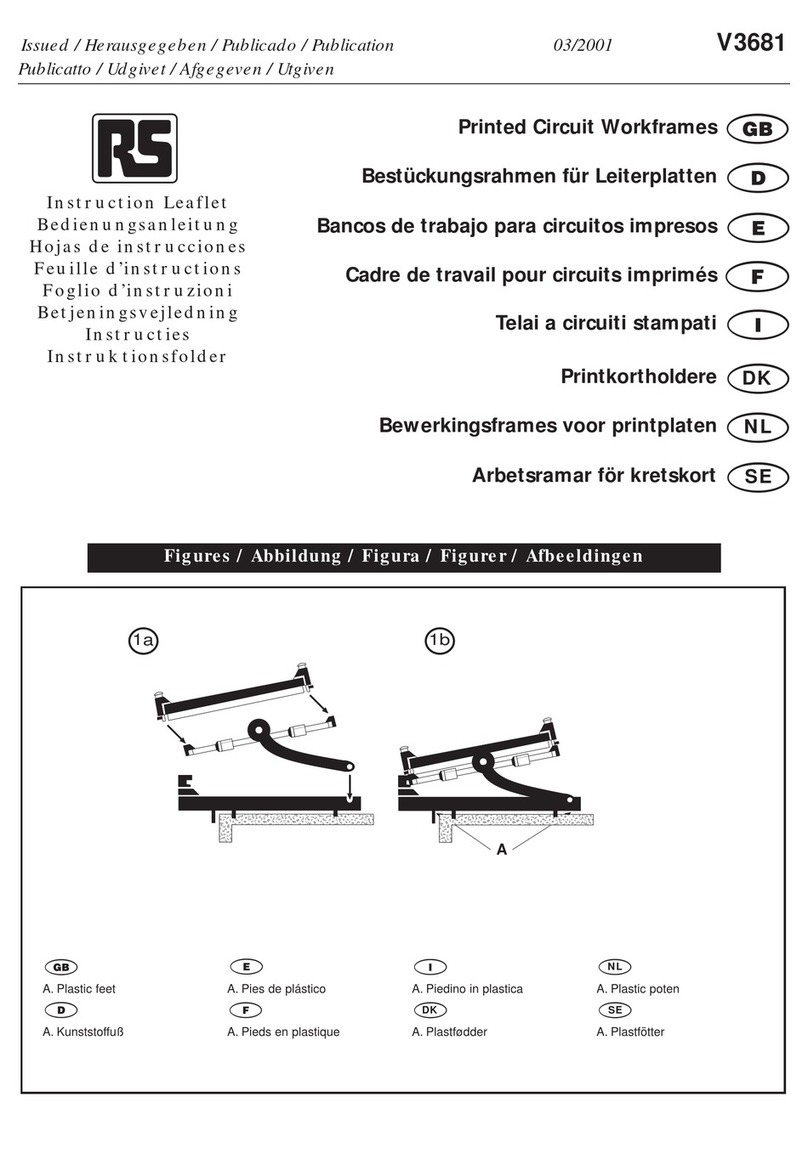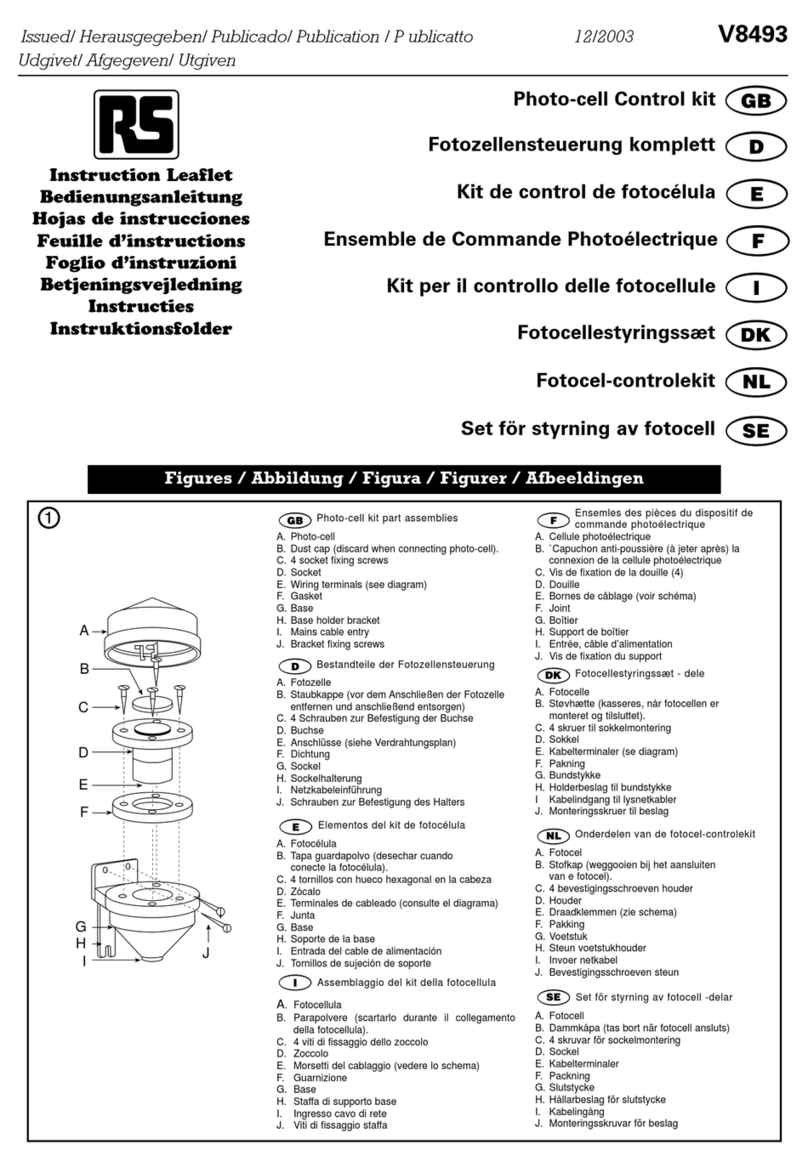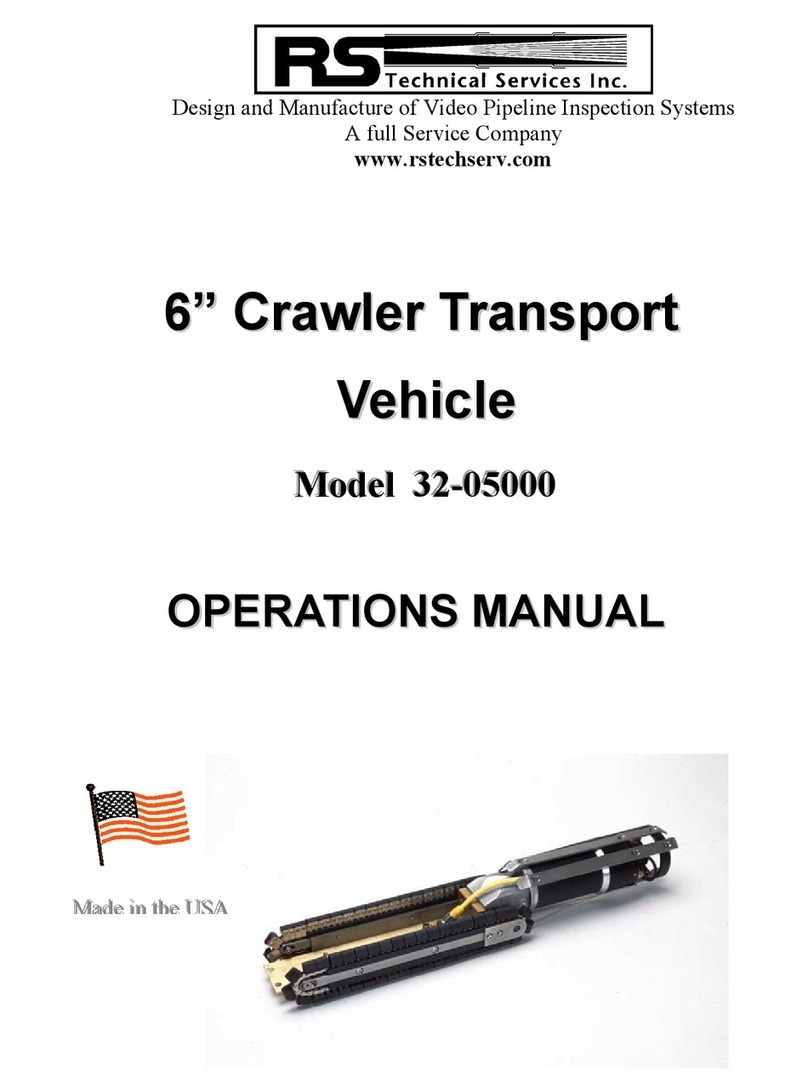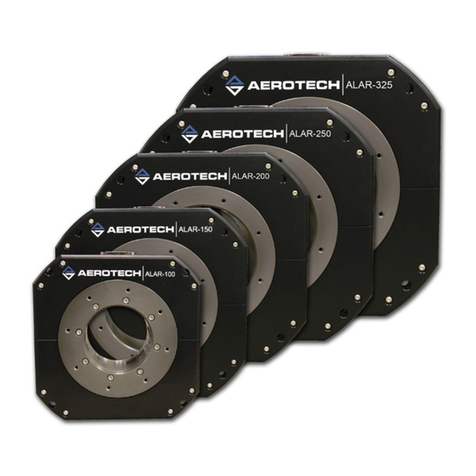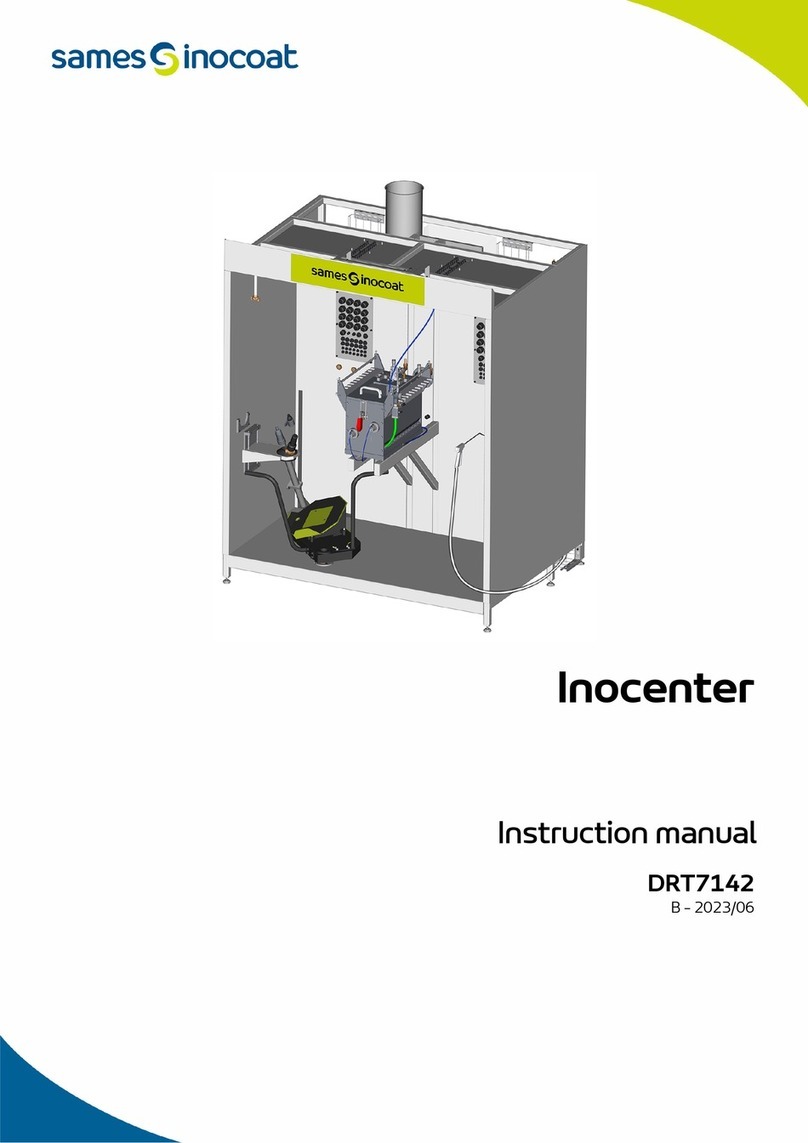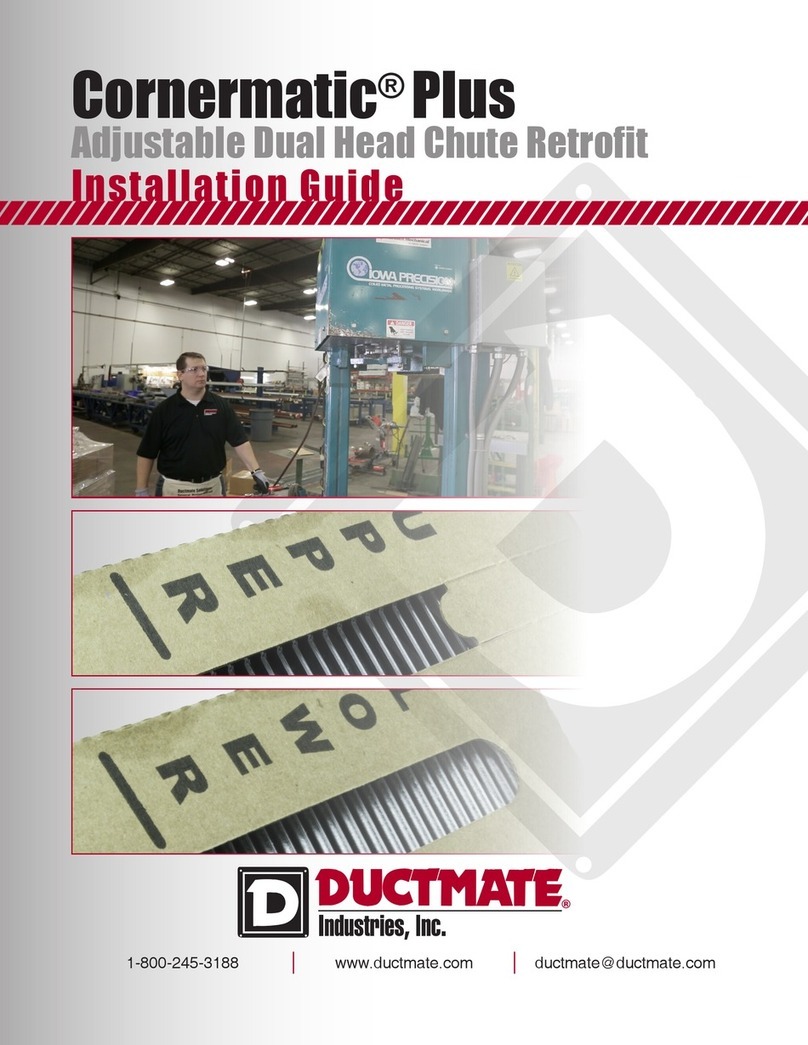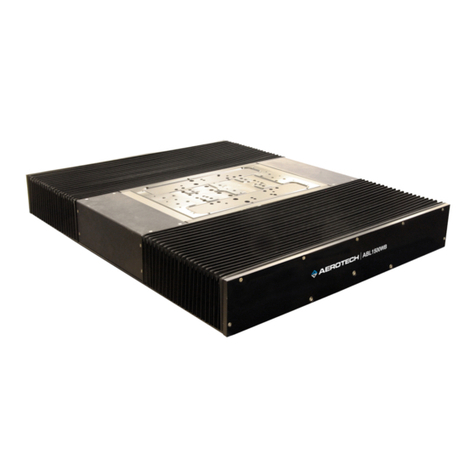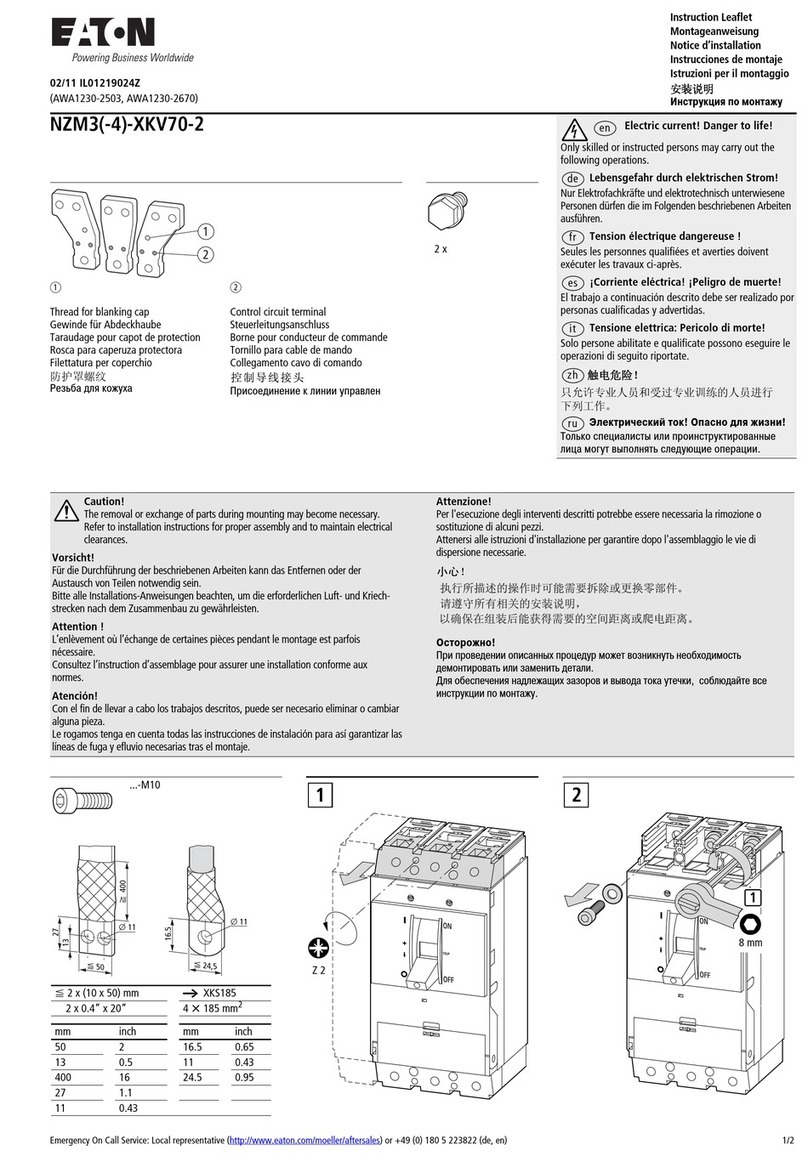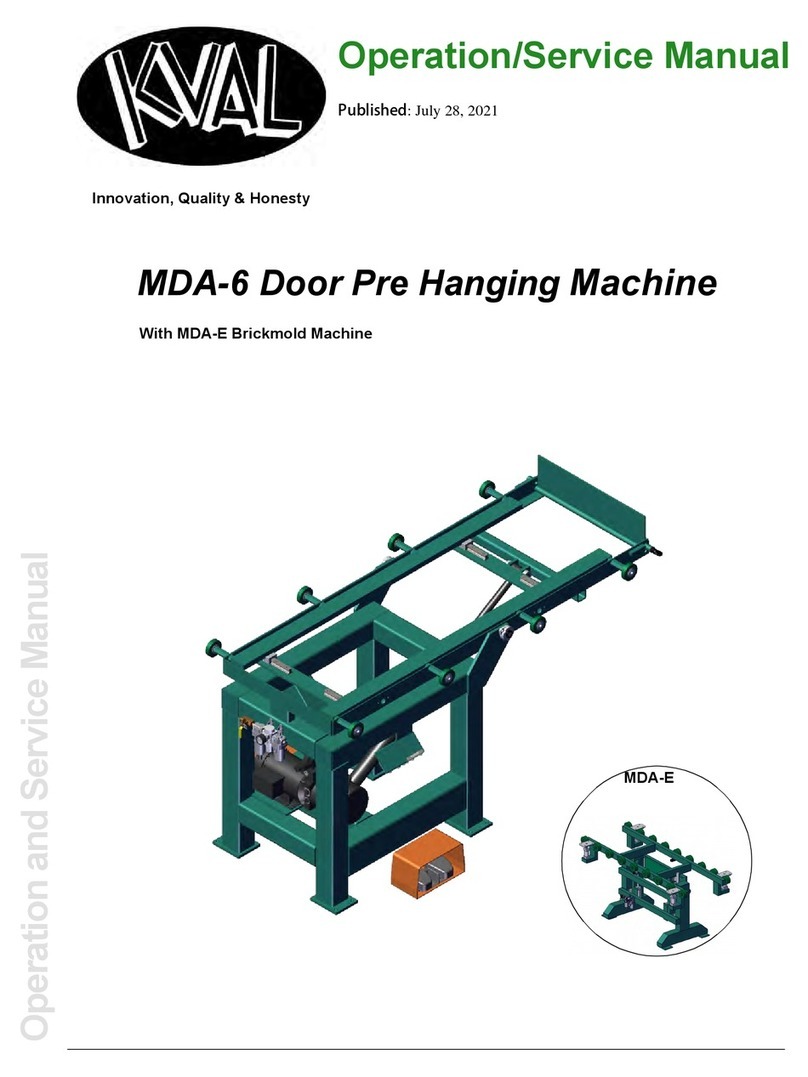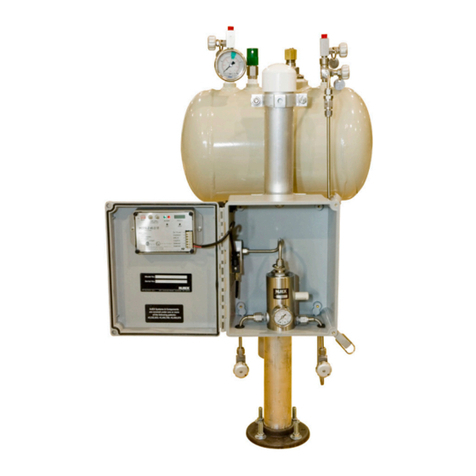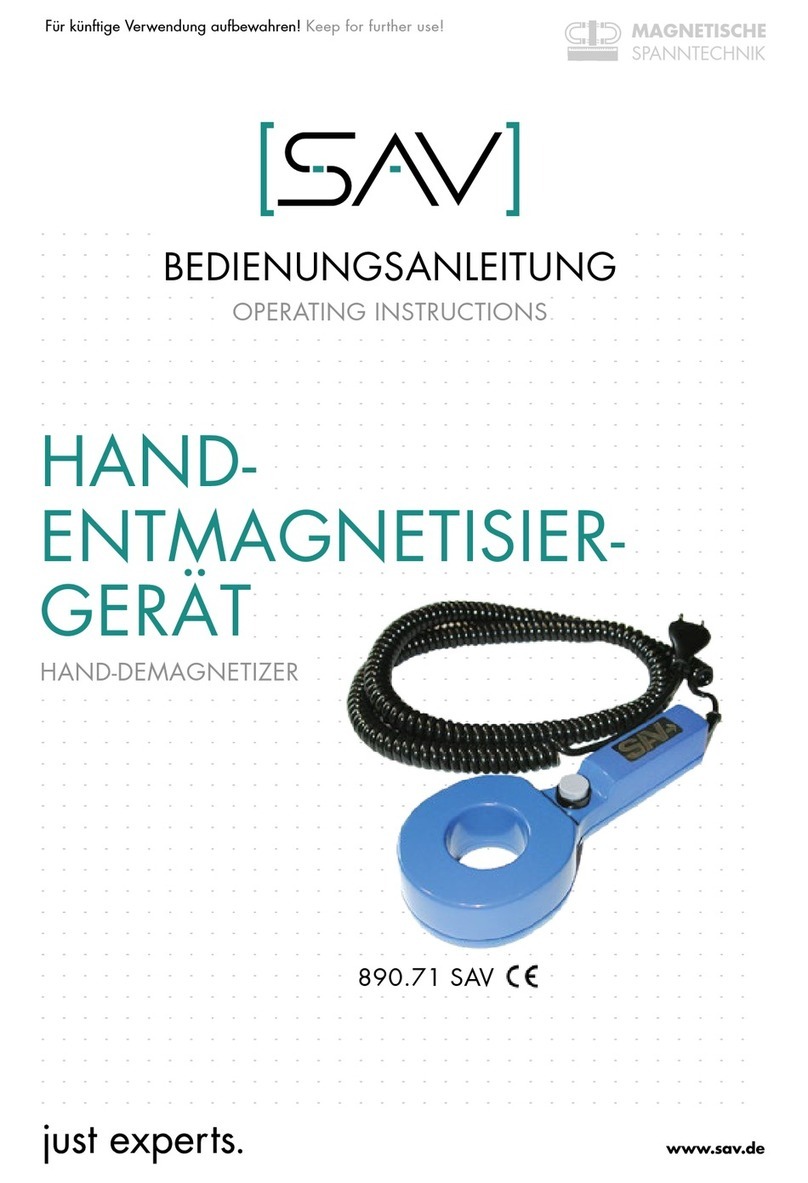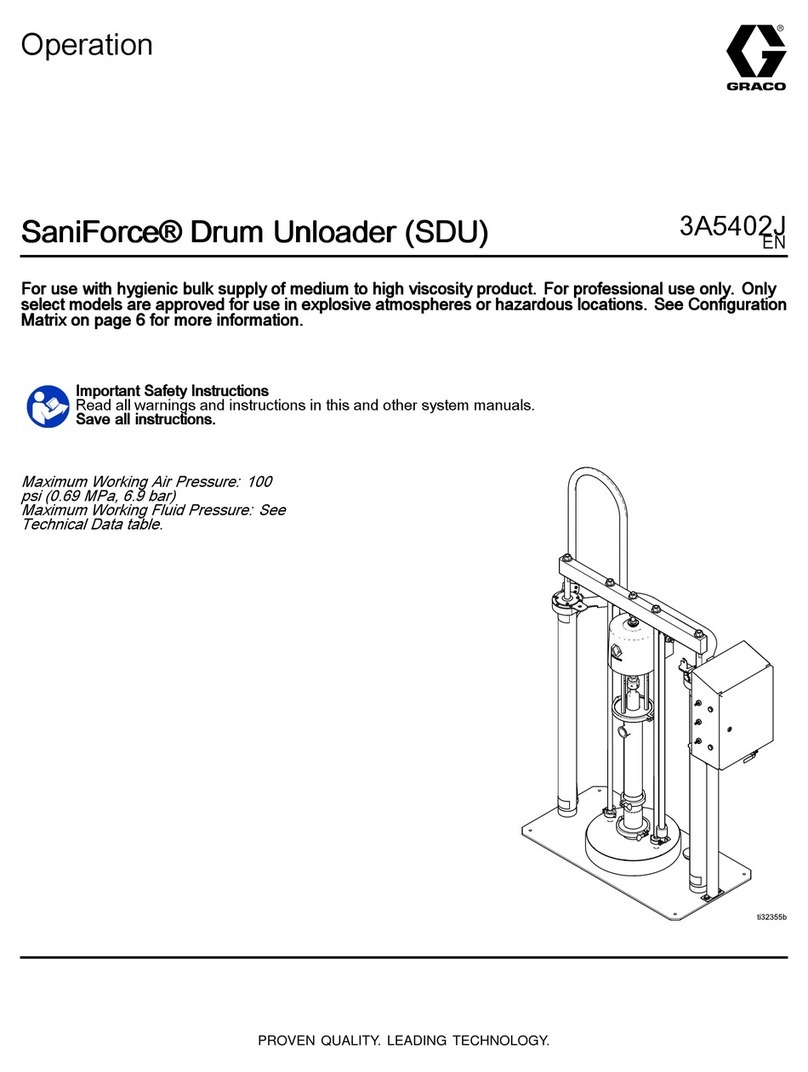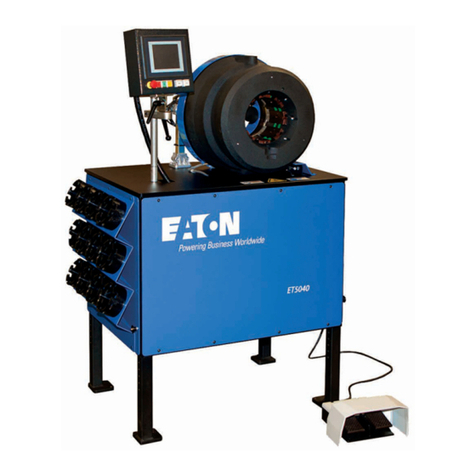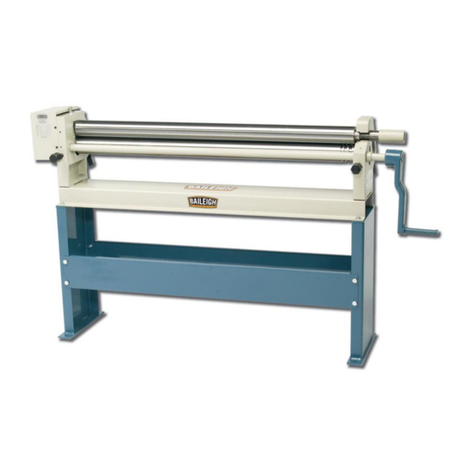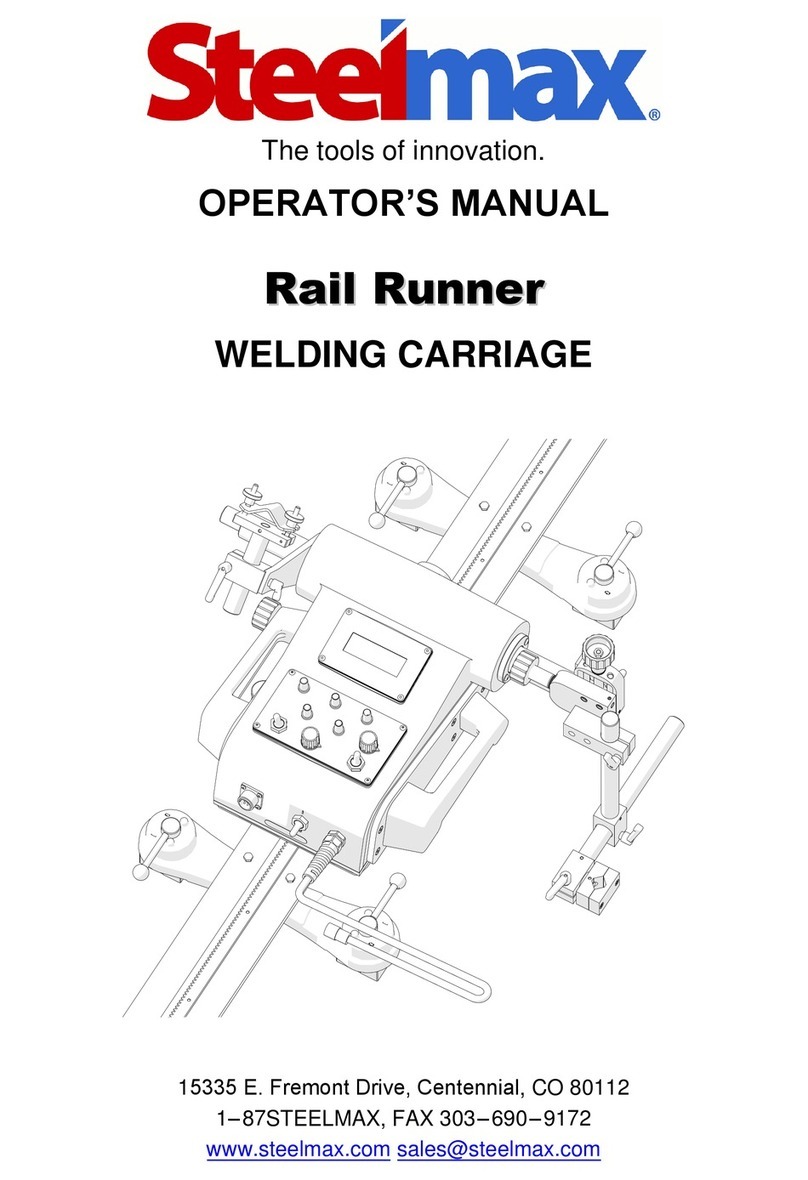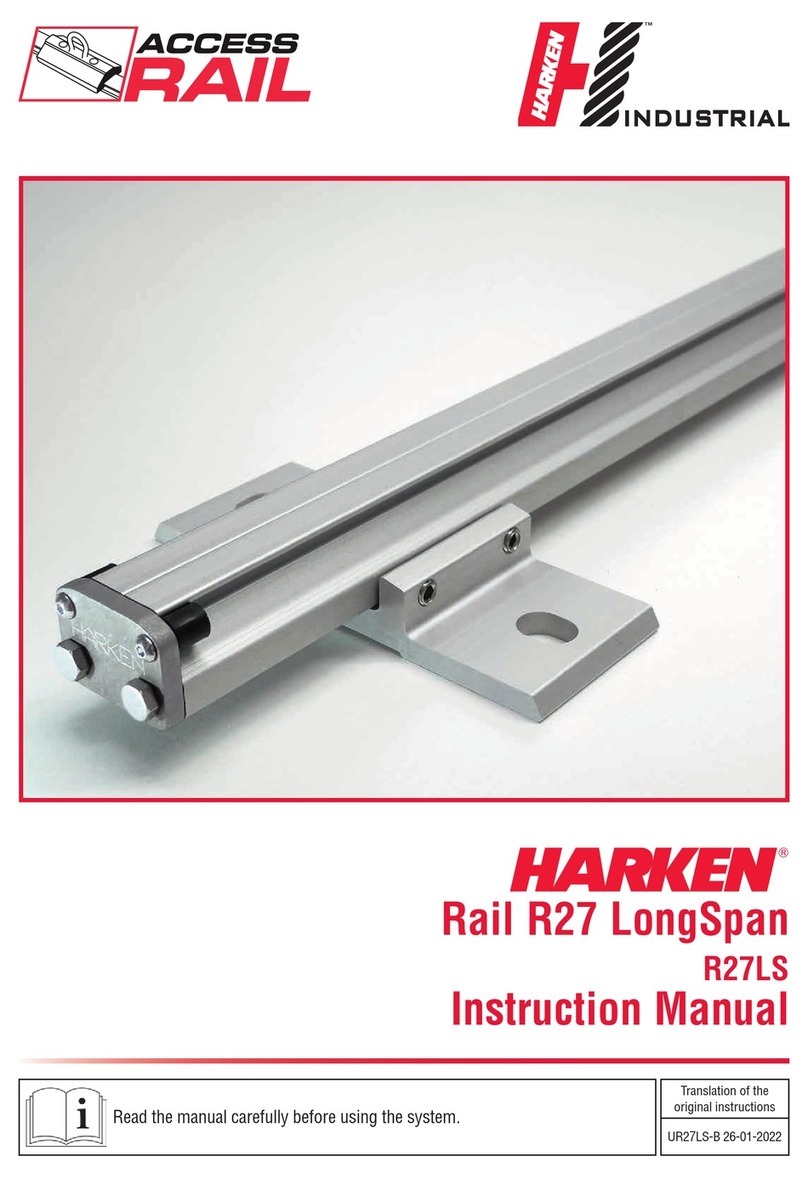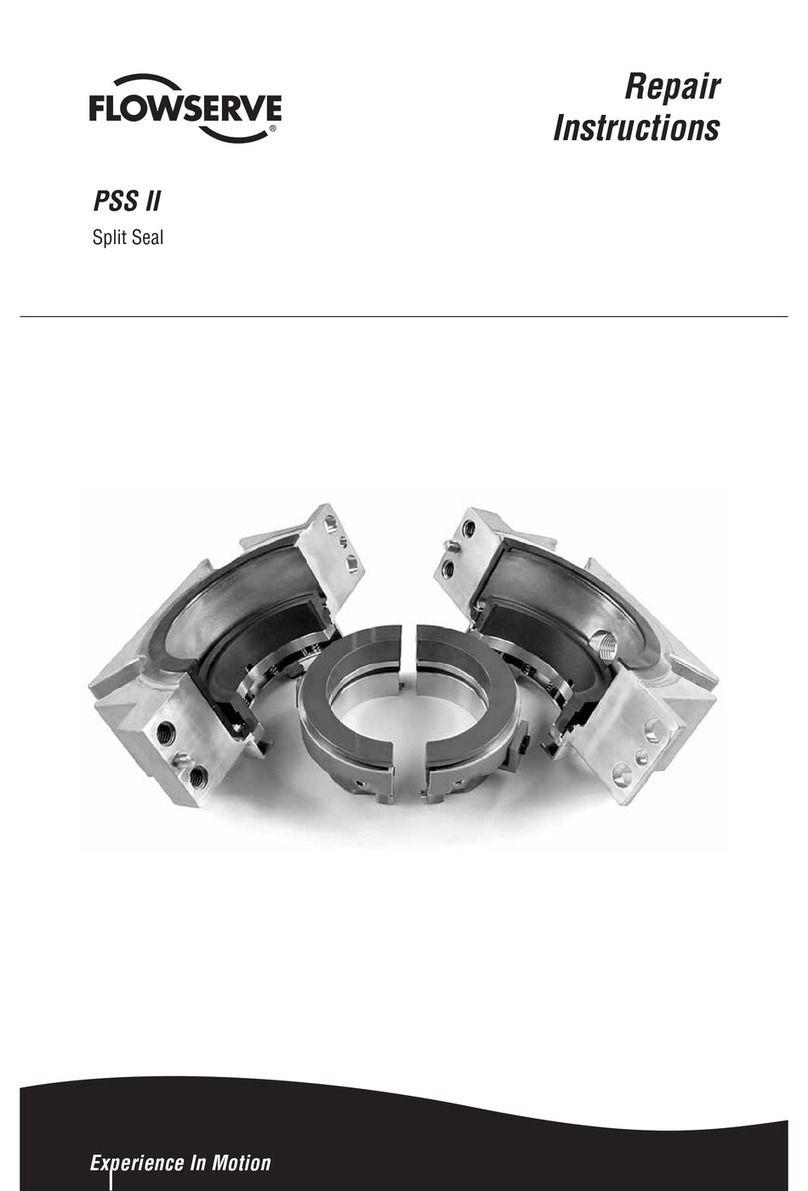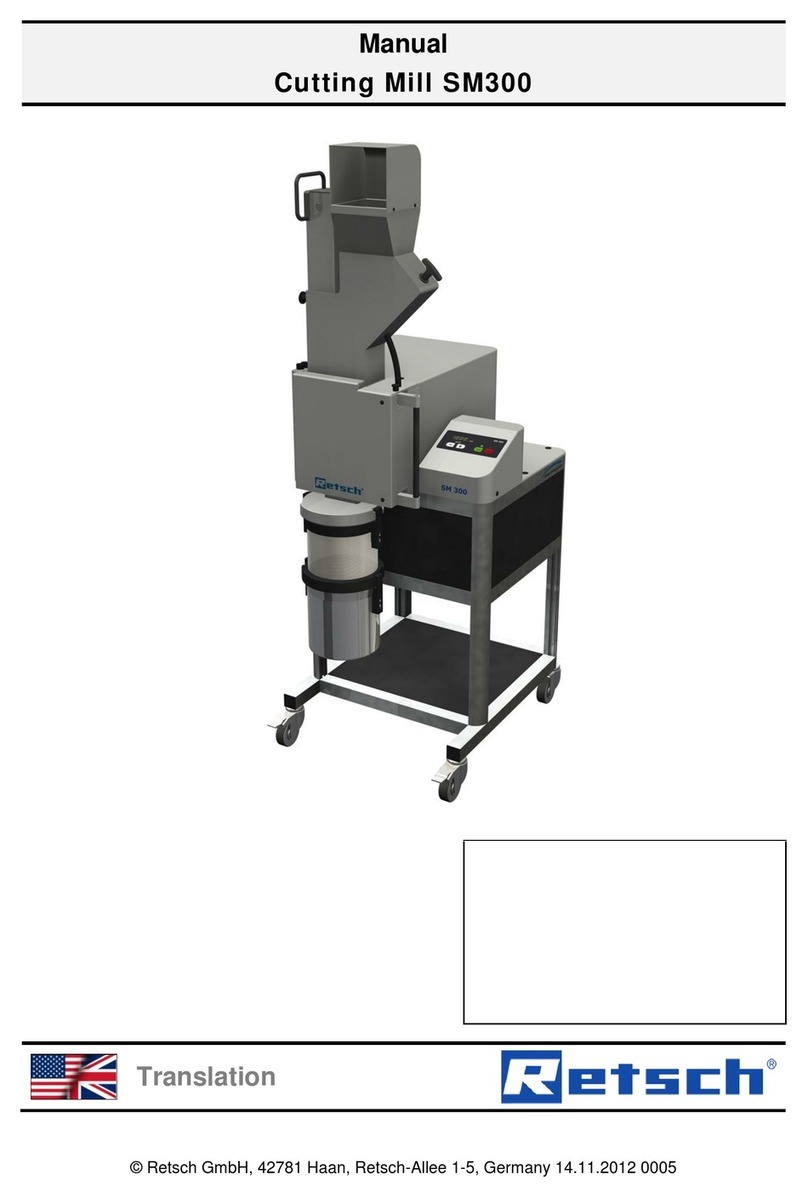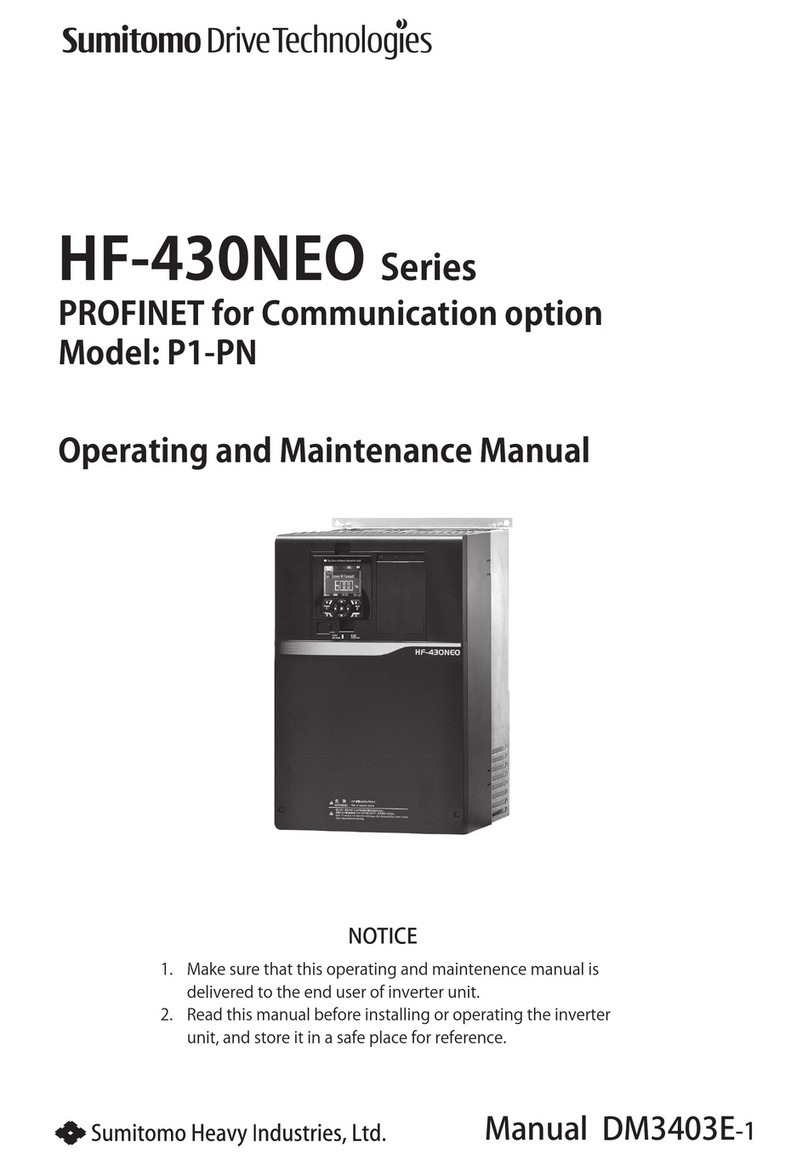RS COMPACT FREEZE TUNNEL User manual

OPERATION
&
MAINTENANCE
MANUAL
CompactFreezer
1
TABLE OF CONTENTS
Page
TABLE OF CONTENTS....................................................................................................................................1
1.
General Overview..................................................................................................................................3
1.1.
Inspection
............................................................................................................................................
3
1.2.
Symbols &Identifiers....................................................................................................................3
2.
Safety Precautions.................................................................................................................................4
2.1.
Safety Considerations Before Operation......................................................................................4
2.2.
General Guidelines .......................................................................................................................4
2.3.
Safety Devices...............................................................................................................................5
2.4.
Liquid NitrogenHazards................................................................................................................6
3.
About the Compact Freezer...................................................................................................................7
3.1.
EquipmentSpecifications .............................................................................................................7
3.2.
The Compact FreezerProcess.......................................................................................................8
3.3.
The Freezer...................................................................................................................................8
3.4.
Conveyor(s) / Belt(s).....................................................................................................................9
3.5.
Circulating Fans ............................................................................................................................9
3.6.
Control Panel ..............................................................................................................................10
3.7.
Injection Headers........................................................................................................................11
3.8.
Temperature Control System .....................................................................................................11
4.
Installation & Assembly.......................................................................................................................12
4.1.
Site Selection Requirements.......................................................................................................12
4.2.
Unloading the Compact Freezer®...............................................................................................13
4.3.
Positioning the Freezer...............................................................................................................13
4.4.
Connecting Freezer Sections andSealing ...................................................................................14
4.5.
Installation of the Conveyor Belts ..............................................................................................15
4.6.
Leveling the Freezer....................................................................................................................15
4.7.
Exhaust Trough and Blower........................................................................................................16
4.8.
Final Adjustments.......................................................................................................................16
5.
Auxiliary Connections..........................................................................................................................17
5.1.
Electrical Wiring Connections.....................................................................................................17
5.2.
LN2 Supply Connection ...............................................................................................................18
5.3.
Exhaust SystemInstallation........................................................................................................19
5.4.
Tuning of Ambient AirIntake......................................................................................................19
6.
Initial Start‐up and Tuning...................................................................................................................21
6.1.
Pre‐Startup Checklist ..................................................................................................................21
6.2.
Initial Start‐up.............................................................................................................................22
6.3.
LN2 Injection –Tuning and Adjustment......................................................................................23
6.4.
Injection System TuningProcedure............................................................................................24
6.5.
Operating Temperature..............................................................................................................24

OPERATION
&
MAINTENANCE
MANUAL
CompactFreezer
2
6.6.
Freezer Control Variables...........................................................................................................25
7.
Operating Instructions.........................................................................................................................27
7.1.
Important Operating and Maintenance Pointers.......................................................................27
7.2.
Daily Start‐Up and Operation.....................................................................................................27
7.3.
Production Interruptions............................................................................................................29
7.4.
Vapor Exhaust Collection and Discharge....................................................................................29
7.5.
Product Temperature Equilibration ...........................................................................................30
7.6.
Shutdown ...................................................................................................................................31
7.7.
Emergency Shut Down ...............................................................................................................31
8.
Cleaning................................................................................................................................................32
8.1.
Pre‐Cleaning Checklist................................................................................................................32
8.2.
Cleaning Procedure ....................................................................................................................32
9.
Maintenance........................................................................................................................................34
9.1.
Preventative Maintenance.........................................................................................................34
9.2.
Entry / Exit Vestibules.................................................................................................................34
9.3.
Conveyor and Conveyor Drive....................................................................................................35
9.4.
Safety Relief Valves ....................................................................................................................36
9.5.
Module Joints .............................................................................................................................36
9.6.
Solenoid Valves...........................................................................................................................36
9.7.
Strainer.......................................................................................................................................36
9.8.
Doors ..........................................................................................................................................36
9.9.
Headers and Orifices ..................................................................................................................37
9.10.
Temperature Controller .............................................................................................................38
9.11.
Temperature Sensor (RTD Type) ................................................................................................38
10.
Trouble Shooting .................................................................................................................................41
10.1.
Electrical Power Supply ..............................................................................................................41
10.2.
Liquid Nitrogen Supply ...............................................................................................................41
10.3.
Conveyor System........................................................................................................................41
10.4.
Troublshooting Table..................................................................................................................42
11.
Spare Parts List ....................................................................................................................................45
11.1.
Motor and Fan Assembly Parts...................................................................................................45
11.2.
Control Cabinet Parts .................................................................................................................45
11.3.
Other Parts .................................................................................................................................46
12.
Appendices...........................................................................................................................................47
12.1.
Appendix A –Liquid Nitrogen MSDS ..........................................................................................47
12.2.
Appendix B –Reference Drawings .............................................................................................48
12.3.
Appendix C –Component Manuals............................................................................................49
For more specific information about the equipment and components, please contact manufacturer.

OPERATION
&
MAINTENANCE
MANUAL
CompactFreezer
3
1.
General Overview
This manual describes the installation and operation of Compact Freezer tunnel freezers using liquid
nitrogen. The installation described herein comprises the cryogenic storage system, the supply pipes,
the application‐specific installation, as well as auxiliary equipment andaccessories.
The information applies to the various models such as those with 12” wide or 24”” wide conveyor belts,
single pass freezers, as well as those with optional variable speed fans(3 module in length). When
necessary
for clarification, special comments will be included for a specificvariation.
1.1.
INSPECTION
Carefully inspect for damage that may have occurred during shipping. Check the packaging list to make
sure that all separately packed items (exhaust, spare parts, bolts, etc.) have beenreceived.
If there is any damage, allclaims must be made promptly to the shipping company. The RS Cryo Equipment
representative should also be notified of any claimsmade.
1.2.
SYMBOLS & IDENTIFIERS
The following symbols are found throughout the document to bring attention to potentially dangerous
situations.
Hazardous situation
Possible consequences: Slight to major injuries.
Harmful situation
Possible consequences: Damage to the equipment orenvironment.
Tips and useful information
Electrical hazard
Possible consequences: Severe or fatal injuries.
2.
Safety Precautions
To ensure your safety, and the safety of those around you, carefully read through the safety precautions
in this section.
2.1.
SAFETY CONSIDERATIONS BEFORE OPERATION
The Compact freezer has been designed to operate in as safe a manner as possible with an
exhaust
system to assure the efficient removal of nitrogengas.

OPERATION
&
MAINTENANCE
MANUAL
CompactFreezer
4
It is emphasized that the room in which the freezer will be installed shall be large enough and have
sufficient air changes, preferably with high and low level ventilation, to prevent a build‐up of nitrogen
gas in case of accidental spillage or malfunctioning of the equipment. An oxygen sensor with alarm
function is strongly recommended.
The freezer described in this manual should only be used for freezing of food products and should be
operated according to the instructions as provided in thismanual.
2.2.
GENERAL GUIDELINES
Ensure the safety of operating personnel and avoid damage to your freezing equipment by considering
the following guidelines:
•
Ensure the freezer exhaust system is turned on and the production area is adequately ventilated
during operation of the installation.
•
Do not touch any cooled parts or products without suitable protective gear.
•
Always check that the exhaust system is functioning properly before starting the injection of
nitrogen. Failure to do so could result in asphyxiation.
•
Never touch liquid nitrogen, frozen products or freezer internals with bare hands. All are
extremely cold and can cause cold burns. Personal Protective Equipment (PPE) for use with
liquid nitrogen are found in the Appendix A –Liquid Nitrogen MSDS.
•
Avoid stopping the conveyor belt and exhaust system while the freezer is cold. This allows
humid
air into the freezer, and may cause the system to freeze up.
•
Never reach inside the freezer when it is running. Doing so may result in bodily injury from cold
burns.
•
Never leave the freezer unattended for long periods of time when it is running.
•
Avoid wearing loose clothing (e.g. open work coats, loose strings, scarves, etc.) in the vicinity of
moving mechanical parts (e.g. drive unit, conveyor belt). This can result in severe bodilyinjury.
•
Maintenance or other work on the installation should only be performed in the presence of
another person, and with the freezer properly de‐energized and locked out.
2.3.
SAFETY DEVICES
The Compact Freezer is equipped with several safety devices, designed with the operator’s safety in
mind. The following is a list of engineered safetycontrols.
Oxygen Level Interlock
The Compact Freezer is equipped with an optional oxygen interlock that is tied into the emergency stop
loop. An oxygen monitor with a beacon and an audible alarm should be purchased to monitor the
oxygen levels in the area around the Compact freezer. It should be wired into the contacts
provided
for this in the control panel so that the freezer will be shut down in the event that low oxygen
levels are
detected. Oxygen concentrations in the ambient (i.e. room) atmosphere should always be
higher than
19.5%, the lower limit according to OSHA. In the event of a shut down, the belt, liquid
nitrogen
injection and circulating fans will stop. However, the exhaust system will continue to run if an
e‐stop is
activated. This ensures continued removal of excess nitrogen in the production area.

OPERATION
&
MAINTENANCE
MANUAL
CompactFreezer
5
Exhaust Blower Interlock
Injection of liquid nitrogen can only occur if the exhaust blower motor is in operation. In addition, the
Compact Freezer is equipped with an optional exhaust interlock that is tied into the emergency stop loop.
i.e., if the
exhaust blower is not operating, the freezer will shut down (the belt, liquid nitrogen and
circulating fans will stop).
Before troubleshooting, the freezer should be locked out at the main
disconnect switch if maintenance
on the exhaust blower is required. It is also good practice to install a
disconnect switch at the blower on
the roof.
Emergency Stop Buttons
There is an Emergency Stop (e‐stop) button; it is located on the control panel above the freezer. In event
of an emergency (e.g. major product jam or unexpected stoppage),
during normal operating mode or in
cleaning mode,
operators can shut down the freezer within seconds. The solenoid valves that control
liquid nitrogen injection will fail
closed to prevent further liquid nitrogen injection, and the conveyor
belt and circulating fans will stop.
The exhaust will continue to run after the e‐stop is activated, to ensure
the proper removal of nitrogen
vapor. To re-start freezer turn the fan, conveyor, and instrument power
buttons to the off position. Once all three are OFF, then turn each back to the on position.
Freezer Door Interlock
Limit switches monitor the open/close status of the freezer doors. The safety‐rated limit switches
are
wired normally open to prevent the circulating fans and cryogen from activatingwhen the doors are
open.
When the doors close, the limit switch contacts also close, energizing the circulating fans and the
cryogenic solenoid valves. If the doors are opened during operation, the circulating fans ( 3 m o d u l e
f r e e z e r s o n l y ) and liquid
nitrogen injection will stop.
Pressure Relief Valves
A pressure relief valve is located on the freezer between the manual shutoff valve at the freezer, and the
two solenoid valves. The relief valve prevents the possibility of pipe rupture due to the trapped liquid
expanding to gas. Relief valves should be piped away to an outside location, to ensure proper removal
of nitrogen gas if a valve failure shouldoccur.
Dynamic Bracking (3 module freezer)
Electric Dynamic Bracking is used to almost instantly stop the 1/2HP 1200 rpm convection fan motors
motors whenever any upper door is raised, the safety limit switch will shut
all circulating fan motors off,
as well as cryogen injection in thefreezer.

OPERATION
&
MAINTENANCE
MANUAL
CompactFreezer
6
2.4.
LIQUID NITROGEN HAZARDS
Inform all personnel about the potential hazards related to the use of liquid nitrogen in chilling
equipment!
COLD BURNS: The freezer operates on liquid nitrogen, which can reach temperatures as low as -320°F (-
196°C). Physical contact with the liquid nitrogen can cause cold burns and tissue damage. Avoid any
direct contact with liquid nitrogen or mediums/metal in direct contact with liquid nitrogen by wearing
suitable safety gear (safety glasses, facial shield, long‐sleeved clothes, long pants, appropriate thermal
insulated gloves). The surface of the product leaving the freezer is at sub‐zero temperature and should
not be handled without sufficient protection. This also applies to the internal surfaces of the freezer
when just opened.
HIGH PRESSURE INJURY: Never trap liquid nitrogen in a line without safety relief valves. As liquid in the
pipe warms, it expands while changing to a vapor and causes the pressure to increase. Unless this
pressure can bleed back into the supply tank or out a safety relief valve, it may burst the line. Safety
relief valves should be piped to an outside area. Always open valves slowly in case of a leak
downstream.
Know where shut‐off valves are in case of anemergency.
OXYGEN DEFICIENCY: Nitrogen is a colorless, odorless, non‐toxic gas. The atmosphere we breathe is
78% nitrogen by volume. However, nitrogen gas can displace the air in the area surrounding during the
evaporation of liquid nitrogen and cause asphyxiation. An appropriately sized exhaust system needs to
be installed with the freezer to remove the spent vapor outside of the building. This is to prevent the
nitrogen concentration in the room air from building up to an excessive concentration and reduce the
amount of life supporting oxygen in the air to an unacceptablelevel.
Oxygen concentrations in the ambient (i.e. room) atmosphere should always be higher than 19.5%, the
lower limit according to OSHA. Exposure to atmospheres containing 16% or less of oxygen will lead to
unconsciousness without warning! Please refer to the MSDS sheet in the Appendix to see the effects of
lower oxygen levels on thebody.

OPERATION
&
MAINTENANCE
MANUAL
CompactFreezer
7
3.
About the Compact Freezer
3.1.
EQUIPMENT SPECIFICATIONS
COMPACT FREEZER
FREEZER
MODULES
LENGTH
1
83”
2
122”
3
161”
±
±
38
38
7 ¼”
40
48
120V SINGLE
PHASE
35AMP

OPERATION
&
MAINTENANCE
MANUAL
CompactFreezer
8
3.2.
COMPACT FREEZER PROCESS
The three basic principles of the Ultra‐Freeze® processare:
•
The use of fans (3module) to circulate the cold gases at high velocity. The one and two module units
use the pressure of the cryogenic tank to circulate the air. Fans can be added as an option to any
unit.
•
Accurate control of temperature
•
Belt speed control to set required “time exposure”, or “tunnel dwell time”
The Compact Freezer process utilizes the “wind chill” effect to increase the freeze rate for products. The
high velocity gas flow created by the circulating fans, continually removes the thin insulating envelopeof
static gas that normally surrounds the product to be frozen. This allows the super cold nitrogen gases to
be in very close contact with the surface of the food product. The rapid freeze achieved by the high
velocity gas flow reduces product shrinkage and moisture loss, as well as maintains final quality of the
product.
The liquid nitrogen from the injection nozzles is rapidly converted to cold gas due to absorption of the
heat introduced by the food product. The secret to the efficient operation of the Compact Freezetunnel
is accurate temperature control of the modules and constant uninterrupted injection during the
processing period.
The Compact Freezer temperature controlled injection system keeps the liquid nitrogen consumptionlow
by matching the injection to the product heat load. If the product flow stops, the freezer automatically
reduces the liquid nitrogen injection rate to the minimum required to maintain the freezer operating
(set point) temperature.
A key error made by many operators of cryogenic freezers is improper managing of the freezing process.
Standards need to be set for various products (set point temperature and belt speed); in addition,
proper belt loading and proper belt speed (dwell time) must be maintained. There should be prompt
attention to changing conditions.
3.3.
THE FREEZER
The Compact Freezer is an assembly of one, two or three modules joined together to form an insulated
tunnel
that product is conveyed through. There is an entry and an exit vestibule bolted to the respective
endof
the tunnel. The entry vestibule allows an area for loading the conveyor belt and has an exhaust
trough
for collecting the cold exhaust vapors. The exit vestibule has the conveyor drive motor(s), the
exit
exhaust trough and is the product dischargearea.
The individual modules form natural zones that are used to efficiently control temperature of the
freezing
process. Each module is equipped with two propeller‐type circulating fans mounted above the
conveyor
that rapidly circulate the cold gases over the product. Product heat load variations cause the
temperature
in each zone to change, which signals the cryogenic injection system to cycle off and on as
required. This
insures the highest product freezing capacity with the optimal utilization of the cryogen
cooling capacity.
Each module has stainless steel plates inside the sealed fiberglass skins. The Plates are
located on the

OPERATION
&
MAINTENANCE
MANUAL
CompactFreezer
9
warm outer surfaces of the parts to keep cooling losses to a minimum. All fasteners

OPERATION
&
MAINTENANCE
MANUAL
CompactFreezer
9
attached to the modules are anchored to the inner steel plates through the use of threaded rivet
type
fasteners.
The fiberglass parts are high strength hand lay‐up molded fiberglass parts, coated with a food grade gel
coat. All joints in the fiberglass are on the outside surfaces where they are not subject to
temperature
shocks or expansion and contraction. The doors are insulated with foam‐in‐place closed
cell
polyurethane foam for high insulating value and high structural strength. The module is insulated
with
staggered layers of preformed polyurethane foam to allow for minor expansion and contraction.
There
are no direct metal heat conduction paths to the outside of the freezer. The door gaskets are
preformed spun polyester strips. If they are damaged, the individual gasket sections can be replaced
easily.
All exposed internal metal parts are stainless steel. The fan blades are stainless steel. All
exposed plastic
parts are of materials approved by inspection agencies for use as food contact surfaces.
The upper and
lower doors open on each side of the freezer to fully expose the inside for ease of
cleaning.
3.4.
CONVEYOR(S) / BELT(S)
The conveyor belt is an all stainless steel ¾” pitch Ashworth (or equivalent) omni grid style with side
drive links. The conveyor mesh overlay is selected to be suitable for the product to be cooled orfrozen.
The conveyor drive gear reducer(s) is driven by a AC motor with the speed controller potentiometer
mounted on the freezer control panel. The horsepower of the drive motor (1/3 or greater) depends
on
the width and length of the freezer.
The standard conveyor belt speed range is 5 to 22 ft per minute. Other speed ranges are provided as
required. If the conveyor needs to operate at extremely low speeds, a change in gear ratio may be
required. DC motor speed should be greater than 500 rpm to prevent the motor from overheating.
3.5.
CIRCULATING FANS
The 1/2HP 1200 rpm motors (3 module) also stop almost instantly
by using electric dynamic braking.
Whenever any upper door is raised, the safety limit switch will shut
all circulating fan motors off, as well
as cryogen injection in the freezer.

OPERATION
&
MAINTENANCE
MANUAL
CompactFreezer
10
3.6.
CONTROL PANEL
The freezer controls are conveniently located on the front panel of the NEMA 12 rated control cabinet.
The controls are the following: Main motor disconnect switch handle (120 VAC, 1 phase, 60 Hz)
1.
Fan motor push button station (1 per freezer) for variable speedfans
2.
Conveyor drive push button station (1 per drive)
3.
Instrument power push button station
4.
Exhaust blowers push button station
5.
Temperature controller(s) (1 per LN2 drop)
6.
Conveyor speed selector knob(s) (1 per drive)
7.
Conveyor speed indicator (reads in ft/min with standard ratio gear reducers)
8.
Fan speed selector knob for variable speed fan models (1 per freezer)
9.
Emergency Stop Button (not shown)
i

OPERATION
&
MAINTENANCE
MANUAL
CompactFreezer
11
3.7.
INJECTION HEADERS
Each assembly feeds the cryogen through the top of the box down into the center of a
freezer module.
Each drop can control injection of LN2 into either one or two modules through the use
of extension
headers. A single module drop supplies liquid nitrogen to the right or left side extension
piping with
cross pipes of nozzles to be fed from both sides with liquid. The nozzles are threaded into
the cross
piping for replacement with plugs where nozzles are notrequired.
Nozzles are added, or removed and replaced with pipe plugs, to control the total amounts of liquid
nitrogen injected into themodules.
Those drops that require the use of extension headers have piping run to either the preceding or
following module with a duplicate header system in those modules. For optimal freezing capacity, the
Compact Freezer tunnel could have LN2 injection headers in each module, but not in the first and last
modules of the assembly, unless efficiency is to be sacrificed.
3.8.
TEMPERATURE CONTROL SYSTEM
The Compact Freezer® tunnel freezer utilizes one or more RTD type (Resistance Temperature Device)
electronic temperature controllers to operate each LN2 drop assembly. Stainless steel sheathed
platinum
type sensor(s) extend down through the apparatus box(es) above the freezer module down
into the
module(s) itself. The sensor should extend exactly 1‐1/2” into the module for accurate
temperature
sampling of the gaseous medium.
The temperature controller(s) is mounted on the cover of the main controlcabinet.
2
i

OPERATION
&
MAINTENANCE
MANUAL
CompactFreezer
12
4.
Installation & Assembly
4.1.
SITE SELECTION REQUIREMENTS
The installation site of the Compact Freezer must meet the following requirements for safe operation:
•
Located in close proximity to the Liquid Nitrogen (LN2) tank or vessel.
•
Supply Voltage/Frequency: 120 VAC+ Ground, 1 phase, 60Hz
•
Located in a large, well ventilated room
•
The exhaust duct piping from the ULTRA‐FREEZE® must run outside in order to ensure removal
of the N2 gas from the processing room. Note: Avoid exhausting to outside areas where people
typically congregate (e.g. break areas, smoke areas, etc)
•
Rooms underneath the installation site must be adequately ventilated.
•
Warning or hazard signs are posted around the freezer for safety purposes are highly
recommended.
Installation PathRequirements
To avoid possible hindrances, carefully map out the path to the installation area prior to unloading the
Compact Freezer from the truck. Determine the most suitable freezer orientation to pass through all
"bottle necks" and to assure correct orientation at final in‐plantlocation.
Pay particular attention to:
•
the height and width of doorways on the path to the installation area;
•
the height and width of the various corridors.
Be sure to account for obstructions such as light armatures, ramps, overhangs, ducting, cupboards,
shelves, etc. Use the dimensions provided in Section 3.1 ‐ Equipment Specifications.
Floor Space Requirements
Prior to installation of the Compact Freezer ensure that the space available at the installation site will
accommodate the freezerdimensions.
Remember to:
•
allow for sufficient space around the freezer for normal traffic;
•
make sure the freezer is accessible in case of emergency;
•
provide sufficient clearance for all pivoting parts (e.g. doors). Be sure to account for
obstructions such as light armatures, ramps, overhangs, ducting, cupboards, shelves,etc.

OPERATION
&
MAINTENANCE
MANUAL
CompactFreezer
13
Overall freezer dimensions, in‐feed height, exit height, etc. can be found in Section 3.1 ‐Equipment
Specifications. Utilize this data to make height adjustments of freezer and/or processing line
equipment.
4.2.
UNLOADING THE Compact Freezer
Professional riggers are recommended when unloading the freezer. Professional riggers have the
experience and equipment to unload the freezer and move it into the desired location in minimal time.
Each freezer is shipped in a specially designed crate to protect the modules and allow for easy
unloading.
Crates can be as long as 48”.
The layout and sizes of doors within the production plant sometimes dictate that the freezer be crated
in smaller sections. If the production plant doors are too small, then a contractor will have to be called
in to make the door large enough to get a crated freezer section through. The freezer can be broken
down into individual modules to allow for movement on freight elevators, etc., if required. This should
be
avoided to reduce on‐site wiring and assembly time.
For safety reasons the freezer must be unloaded by means of a crane or forklift. The recommended
means of transport is on industrial rollers, if a crane or forklift can not be used. Ensure that the total
weight of the freezer does not exceed the maximum allowed load of the crane, lifting straps or forklift.
Check the stability of the configuration during the liftingoperation.
4.3.
POSITIONING THE FREEZER
The location of the freezer in a crowded area sometimes dictates which end of the freezer has to be put
into position first. The freezer can be loaded on the truck with the crates in the correct order to allow
proper orientation. If the plant area is large enough to turn a section around, then the sections of the
freezer may be loaded in any combination.
Each freezer is shipped anywhere from one to three crated sections of up to three modules. Other
cratesinclude:
•
Conveyors
•
Control Cabinet –Wiring diagrams and manuals are inside the enclosure. The shielded cables
for the temperature sensors are also included. Standard units have the cabinet mounted on top
of the freezer.
•
Exhaust Troughs –Two vapor collection troughs to be attached, one each to the
entry and exit
vestibules. They are available both right hand and left hand, but usually are
matched sets.
•
Insulated Drop Assemblies, Miscellaneous Metal Covers, Baffles & Other Loose Parts

OPERATION
&
MAINTENANCE
MANUAL
CompactFreezer
14
4.4.
CONNECTING FREEZER SECTIONS AND SEALING (If not shipped assembled)
A)
Move the freezer sections into their proper relative positions on the floor (the entry vestibule has
the drive motor mounted on its sides). The module crates are designed to be moved by forklift
or
pallet trucks and can be rolled or skidded.
B)
Check with the wiring diagrams to determine proper placement of each crate before assembly
(for 2 and 3 module tunnels proceed to step J).
C)
Uncrate the first section to be assembled. Each module end needs to be fully supported before
completely removing the lower 2x10 support braces. Screw down the adjustable plastic
pedestal
legs to meet the floor and raise the modules off the crating slightly before removal.
D)
Attach the end pedestal to the module just uncrated, unless it was shipped that way.
E)
Push the second group of modules up to the end of the first and uncrate the end only. The first
module of the second crate should be positioned to extend about 2” onto the exposed pedestal
half mounting surface.
F)
Uncrate the modules.
G)
Coat to inner mating surface of modules with the silicone sealants shipped with the freezer.
Make
sure the whole edge of same module is covered.
H)
Quickly push the two sections together before the sealant sets. Bolt the modules together with
the four bolts and acorn nuts provided. Guide the electrical conduit into the apparatus box
hole.
I)
Clean away the excess sealant from the module joint.
J)
Continue until all sections are assembled.
K)
To position freezer (sideways or lengthwise) place 2x4’s underneath pedestal legs and pinch it
along. One person per leg is required to prevent damage.
L)
When the freezer is positioned, adjust plastic pedestal legs until freezer is leveled. Floor
clearance
should be about three inches. Clean the outer module joints with acetone so the vinyl
tape will
adhere properly. Do not stretch, just lay over the joint and press down so the heat of
the hand
will cause the tape to stick. Make sure the tape is at least 70°F or it will not adhere
properly.

OPERATION
&
MAINTENANCE
MANUAL
CompactFreezer
15
4.5.
INSTALLATION OF THE CONVEYOR BELT
Pull the belt through the return track leaving the final 6 to 8 feet still in the pile. This is enough belt to
fold over the drive sprockets and splice the conveyor. The conveyor is
free to move until the drive
sprockets teeth areengaged.
Install scraper belt at exit end of top belt and adjust it just short of touching the bet. Do the same for
exit chute on bottom belt.
4.6.
LEVELING THE FREEZER
The freezer should be re‐leveled and readjusted after the conveyor is installed. The two threaded
plastic legs on the bottom of each pedestal should be adjusted out so that they will clear the floor by
about 3‐1/2” for ease of cleaning. The customer’s infeed equipment may actually determine the final

OPERATION
&
MAINTENANCE
MANUAL
CompactFreezer
16
clearance height.
The exhaust troughs should be installed as soon as the machine is leveled so that the sheet metal
or PVC contractor can install the exhaust piping and blowers (see Section 6 –Auxiliary Connections).
4.7.
EXHAUST TROUGH AND BLOWER
The exhaust troughs should be installed as soon as the machine is leveled so that the sheet metal
or PVC contractor can install the exhaust piping and blowers. If a trough ends up supporting the weight of
the
exhaust pipe above it, then a brace should be fixed so that trough end and extend down to the floor
for
support.
Based upon preliminary feedback information, the customer is provided with advice on how to install his
blowers, depending on proximity of location and climatic conditions. It is the customer’s responsibility
to supply and install the blowers. If the exhaust is through the roof, the blowers can be mounted under
the roof, or outside on the roof‐top. In certain cases, blowers may be mounted outside a nearby wall.
The horizontal run of the exhaust should pitch downwards towards the blower to allow water to drain
outwards.
Prior to freezer shipment, the appropriate installation drawing for each blower mounting is forwarded
to the customer to pass on to his installation contractor who is normally responsible for mounting and
connecting the exhaust to the trough outlet and the blowerinlet.
For more information on exhaust system installation, see Section 5.3 –Exhaust SystemInstallation.
4.8.
FINAL ADJUSTMENTS
All nuts and bolts should be checked to be sure they are tightened properly. They should be rechecked
after the first few days. The expansion and contraction caused by temperature changes can cause
threaded fasteners to work loose.
5.
Auxiliary Connections
To ensure proper supply connections, take into account any restrictions as provided in Appendix B –
Reference Drawings when designing the supply connections. To allow for proper installation once the
freezer is in place, make sure the following is made available at the in‐plant freezer location:
•
provisions for electrical power supply and connection;
•
provisions for LN2 supply andconnection;
•
provisions for proper installation and connection of exhaust duct;
•
floor drains and corresponding floor pitch as required for drainage of cleaningwater.
The liquid nitrogen piping and electrical conduits should be well protected against accidental damage.
To minimize liquid nitrogen consumption, avoid elbows where possible and ensure piping runs are as
short and direct as possible.

OPERATION
&
MAINTENANCE
MANUAL
CompactFreezer
17
5.1.
ELECTRICAL WIRING CONNECTIONS
Typically, a single 2” conduit will be required to connect the cabinet on
the freezer. Consult the wiring
diagrams inside the control box for proper sizing and location. For
trouble‐fee operation of the
temperature control system, the shielded cable for the RTD sensors should
be run in a separate conduit
away from control and power wiring
In Control Box and ApparatusBoxes (control panels mounted on wall)
A.
Mixed voltages (AC or DC) from 110V up to 600 volts can be bundled and run together
without any appreciable problems.
B.
Signal wires (usually shielded cable) must be run separately from the higher voltage
wires as far away as possible, and no closer than 6 inches. If the wires must cross each
other, they should do so at 90°. Terminal lead lengths should be as short as possible
with shielding grounded at one end only, preferably at the controller end. The location
of the controller and shielded wire should be as remote as possible relative to any AFC
generating unit controller to prevent pick‐up of RF noise. Six inches is tooclose.
1.
Earth Ground –Earth ground must be attached to the unit’s chassis to make it
noise free
2.
Neutral –It is necessary to assure that neutral is at, or near, ground potential.
A voltmeter check between neutral and ground should show no more than 50
millivolts.
In Conduit, Pipe orEMT
A.
Control wires (115V) and power wires up to 600 volts (including DC) can be contained in the
same conduit unless specified otherwise by local code regulation! This conduit terminates on a
designated apparatus box, usually the number 1 module.
B.
Signal wires for the RTD temperature probes (very low voltage and amperage). In our case, this
is
the 3‐wire shielded cable which must be run in its own conduit. Each conduit should originate
from each apparatus box that contains a probe, and rise vertically to normal ceiling height
where
these conduits may junction for the main signal run to the control cabinet. Keep at least
6 inches
from other conduits.
5.2.
LN2 SUPPLY CONNECTION
lock out/tag out (

OPERATION
&
MAINTENANCE
MANUAL
CompactFreezer
18
For operation, the freezer requires a source of liquid nitrogen from a storage tank. The liquid nitrogen
supply piping connects the storage tank with the liquid nitrogen injection system of the freezer. Insulate
all liquid nitrogen piping up to the connection at the freezer to ensure an efficient and economical
operation.
i
Table of contents
Other RS Industrial Equipment manuals

